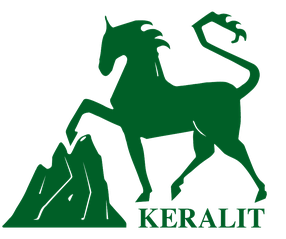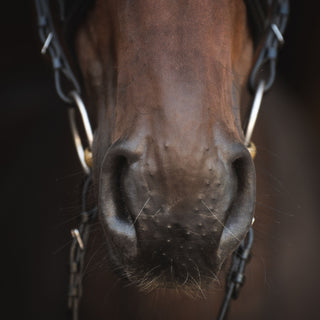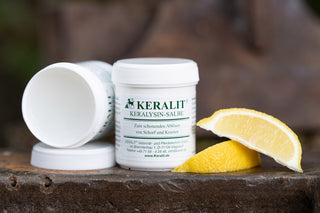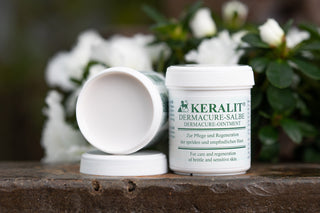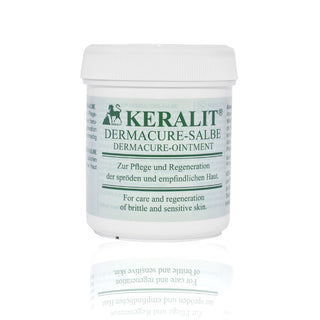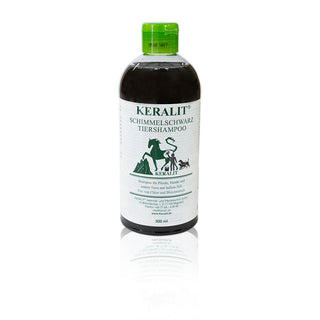Horse grooming is an important task for every horse owner that should be carried out regularly. Daily grooming not only promotes the horse's health and well-being , but also builds a close bond between horse and human . Many horses perceive grooming and brushing as a friendly gesture, comparable to grooming between conspecifics within the herd. In addition, the horse owner gets a good feeling for the health condition of his horse and can thus recognize problems worthy of treatment, such as mallenders, wounds, colic or circulatory problems, early enough. Not only the first impression and grooming are part of horse care and health assessment, but also checking the condition of the horse before and after training or exercise.
What should I bear in mind for daily care?
In addition to grooming the horse, attention should be paid during daily care to whether the horse has sensitive or even painful areas on its body or whether it shows signs of injury or illness. If a horse is particularly sensitive in the back area or has chafing on the head or legs, this may indicate unsuitable equipment such as an unsuitable saddle, an incorrectly fitted snaffle or unsuitable gaiters or leg protection. The formation of white hairs often indicates pressure points.
What does the horse owner have to organize?
Treatment by the vet
In some areas, such as vaccination, dental treatment or the administration of worming treatments, the help of a vet is necessary.
Vaccinations are an important part of preventive health care for horses. The three most important vaccinations include: Tetanus, influenza and herpes.
Tetanus is a life-threatening disease against which vaccination is strongly recommended. The first vaccination (basic immunization) is given at the age of 6 months, followed by the second vaccination (4-6 weeks after the first vaccination) and the third vaccination (12-15 months after the second vaccination). The tetanus vaccination should be boostered every 2-3 years.
Influenza (equine influenza) is a viral disease of the entire respiratory system. It is highly contagious and endangers entire herds, especially if horses are not vaccinated or not vaccinated correctly. Influenza vaccination is compulsory, especially for competition riders, and is even required twice a year (every 6 months). However, this vaccination is also recommended for all other horses, for which one vaccination per year is sufficient.
The basic immunization consists of three vaccinations. The second vaccination is given after a minimum of 28 and a maximum of 70 days after the first vaccination. The third vaccination must not be more than 6 months + 21 days after the second vaccination.
The influenza vaccination should be boostered within 6 months of the last vaccination.
Herpes , on the other hand, is no longer a compulsory vaccination. This decision is therefore at the discretion of the owner or stable manager.
Regular worming is also an important aspect of preventive health care for horses. It is recommended to give worming treatment 3-4 times a year. It is particularly important that the whole stable is wormed together to prevent re-infection and transmission of the parasites.
There are different types of worming treatments, as different parasites occur at different times of the year.
Care by the farrier
When it comes to hoof care, the owner is also dependent on help from a farrier or hoof trimmer . They will take care of the hooves at regular intervals (every six to eight weeks). They can also advise the owner on suitable hoof boots and help to improve the gait by trimming and shoeing the hooves.
Care by the physiotherapist and chiropractor
Physiotherapists and chiropractors also play an important role in horse care to relieve tension and blockages and maintain the horse's well-being. However, it is important to note that this type of treatment must be tailored to the individual horse.
In order to ensure optimum care and maintenance of the horse, all the points listed should be observed regularly. Keeping, feeding and training also play a major role in the well-being and health of the animal and should therefore also be taken into account.
Which injuries need to be recognized?
Injuries such as wounds or swellings that could indicate a bullet hole or phlegmon should be treated immediately. To do this, it is helpful to look all around the horse and first check for bites and wounds caused by insects or ticks. These should then be disinfected and treated immediately. The horse's legs should be palpated to feel for swelling and excessive warmth/heat. The hooves should also be palpated for foreign bodies and heat.
When it comes to horse care, the equipment required for this goes far beyond that of conventional grooming items such as currycombs and grooming brushes. Some products can make daily grooming and care much easier and should therefore not be missing from your stable's first-aid kit.
Which products do I use for stubborn crusts?
To remove stubborn crusts, the Keralit Keralysin ointment can be helpful. This quickly and gently removes scabs and crusts.
For brittle and sensitive skin, the Dermacure ointment contains high-quality nourishing substances that soothe the skin and support its regeneration.
What do I do if the hooves break out?
If the hooves are badly worn or the hoof walls are breaking out, it is recommended to use the Keralit hoof strengthener to the affected areas. This strengthens the molecular structure of the horn and can thus prevent the hooves from breaking off.
The beam looks decomposed, has deep furrows and stinks - which product is the right one?
For thrush, our Beam Liquide and the Undercover can help. These two products care for the frog and protect the horn from decomposition processes. For horses kept in boxes, we recommend the Keralit Frog Liquide. Undercover has proven to be ideal for open stable horses that spend a lot of time in the wet, as it remains in the frog furrows for several days even in wet weather conditions.
How do I get the yellow tint out of the tail and coat?
For this problem, the Keralit mold black animal shampoo concentrate. It can be used to remove even stubborn stains, especially in light-colored coats and tails, from both horses and dogs. And all without irritating chlorine compounds, bleaching agents and odorants.

Basic knowledge of coat care - grooming horses made easy
Learn how proper coat care for horses not only improves their well-being, but also helps to prevent skin diseases. Learn the best grooming tips and techniques for a healthy coat and...

Mauke in horses - causes, symptoms & treatment
Discover everything you need to know about moulting in horses: causes, symptoms and how you can prevent it developing and treat affected areas of skin with the right care. Ensure healthy skin in...
